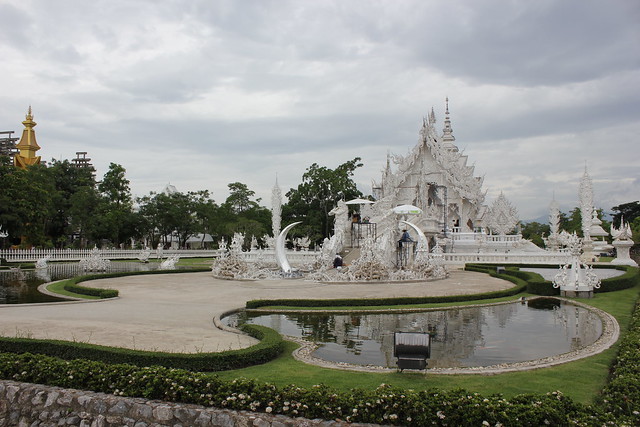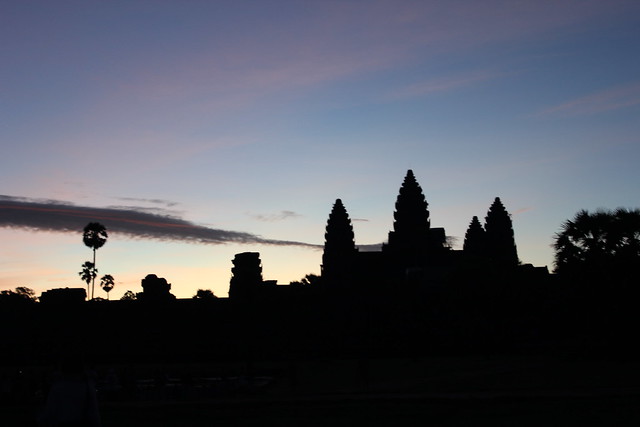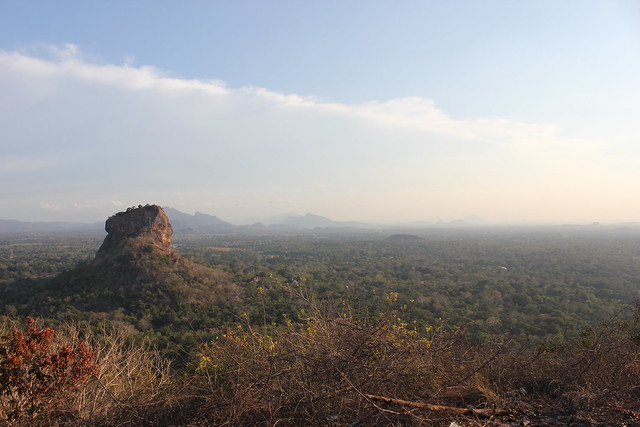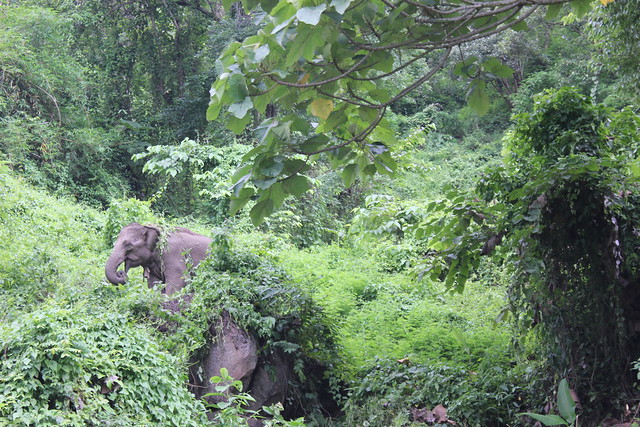Sometimes you meet people who change you. Change the way you think about things, the way you see the world - in a literal sense at least.
Since I crossed the border from southern Laos into Cambodia a week ago I've been with a group of people who more-or-less shunned the day tours in favour of more travelling freedom in the form of motorbikes/ scooters.
In every town I've been to so far - Banlung, Kratie and Kampong Cham, I've been on the back of a motorbike exploring the surrounds a paid day-tour would not take me. Important to note though, I haven't been driving. Not because I don't want to, but because I don't know how - and I have skin missing from my big toe to remind me. (Story below).
Since I left New Zealand at the end of April, by default (because it seemed more convenient and a good way to meet people and because of the reason above), I had always booked day tours around each place I'd been to. And they are, by all means (mostly) worth the money in terms of hitting all the major tourist attractions in one go and for meeting other travellers. Day trips though and even treks, are highly regimented with a set schedule of where to be, what to do and even when to eat. Renting a motorbike or scooter for the day (which is cheaper than a day trip and more fun) never crossed my mind.
For more intrepid and able travellers, the motorbike is the ultimate way to get around (except maybe in the larger cities where the traffic is heavy and hectic) and see parts of the country that not many other tourists may go - and where no minivans or buses could go either. There is a great sense of flexibility and adventure when you're on a motorbike - sure, you may not see all the things you would on a day trip, you may very well get lost, run out of petrol or injure yourself, but that doesn't matter. Its just more fun.
The freedom to go and stop where you want, do what you want and see what life is really like for the locals is worth so much more than the $5 it costs to rent for the day. And from stories I've heard, even if you do damage to the bikes (which are mostly owned by locals so you're actually riding their bikes) doesn't cost that much.
Six of us left Kampong Cham, Cambodia's third biggest city, on four motorbikes and planned to travel along both sides of the Mekong and taking a car ferry across the river. We left late morning (because we could) and took the road to Stung Trong and across on the the ferry. The road there was pretty good - a mix between sealed and dirt roads, but all sans potholes. The other side of the river was a different story. All dirt with massive holes in the middle of the road which resembled a dirt bike track rather than a main thoroughfare through several villages.
The places we passed through, including a few Muslim villages were full of smiling children greeting us in their cute and high-pitched voices ("Hello! Hello! Hello!") followed by a wave as we sped past. They weren't the only ones though - all the villagers, old, young, big, small, greeted us or acknowledged our us with a nod of the head (and helped us out when we thought we were lost). Some seemed truly bewildered to see a small motorcycle gang briefly interrupt their daily life.
But alas, I feel this may be the end of this brief fling with freedom. Our group is going its separate ways and, despite my best efforts, I do not think I'll be riding a motorbike or scooter anytime soon.
(I now have a bandage wrapped around my big toe after trying to ride a motorbike (sorry mum). It was nothing serious, but I lost control of it because I was heavy-handed with the accelerator and ended up driving into the kerb where the bike fell onto the ground. I was wearing jandals and scraped a few layers of skin off my big toe. The bike was unscratched.)
Since I crossed the border from southern Laos into Cambodia a week ago I've been with a group of people who more-or-less shunned the day tours in favour of more travelling freedom in the form of motorbikes/ scooters.
In every town I've been to so far - Banlung, Kratie and Kampong Cham, I've been on the back of a motorbike exploring the surrounds a paid day-tour would not take me. Important to note though, I haven't been driving. Not because I don't want to, but because I don't know how - and I have skin missing from my big toe to remind me. (Story below).
Since I left New Zealand at the end of April, by default (because it seemed more convenient and a good way to meet people and because of the reason above), I had always booked day tours around each place I'd been to. And they are, by all means (mostly) worth the money in terms of hitting all the major tourist attractions in one go and for meeting other travellers. Day trips though and even treks, are highly regimented with a set schedule of where to be, what to do and even when to eat. Renting a motorbike or scooter for the day (which is cheaper than a day trip and more fun) never crossed my mind.
For more intrepid and able travellers, the motorbike is the ultimate way to get around (except maybe in the larger cities where the traffic is heavy and hectic) and see parts of the country that not many other tourists may go - and where no minivans or buses could go either. There is a great sense of flexibility and adventure when you're on a motorbike - sure, you may not see all the things you would on a day trip, you may very well get lost, run out of petrol or injure yourself, but that doesn't matter. Its just more fun.
The freedom to go and stop where you want, do what you want and see what life is really like for the locals is worth so much more than the $5 it costs to rent for the day. And from stories I've heard, even if you do damage to the bikes (which are mostly owned by locals so you're actually riding their bikes) doesn't cost that much.
Six of us left Kampong Cham, Cambodia's third biggest city, on four motorbikes and planned to travel along both sides of the Mekong and taking a car ferry across the river. We left late morning (because we could) and took the road to Stung Trong and across on the the ferry. The road there was pretty good - a mix between sealed and dirt roads, but all sans potholes. The other side of the river was a different story. All dirt with massive holes in the middle of the road which resembled a dirt bike track rather than a main thoroughfare through several villages.
The places we passed through, including a few Muslim villages were full of smiling children greeting us in their cute and high-pitched voices ("Hello! Hello! Hello!") followed by a wave as we sped past. They weren't the only ones though - all the villagers, old, young, big, small, greeted us or acknowledged our us with a nod of the head (and helped us out when we thought we were lost). Some seemed truly bewildered to see a small motorcycle gang briefly interrupt their daily life.
But alas, I feel this may be the end of this brief fling with freedom. Our group is going its separate ways and, despite my best efforts, I do not think I'll be riding a motorbike or scooter anytime soon.
(I now have a bandage wrapped around my big toe after trying to ride a motorbike (sorry mum). It was nothing serious, but I lost control of it because I was heavy-handed with the accelerator and ended up driving into the kerb where the bike fell onto the ground. I was wearing jandals and scraped a few layers of skin off my big toe. The bike was unscratched.)






